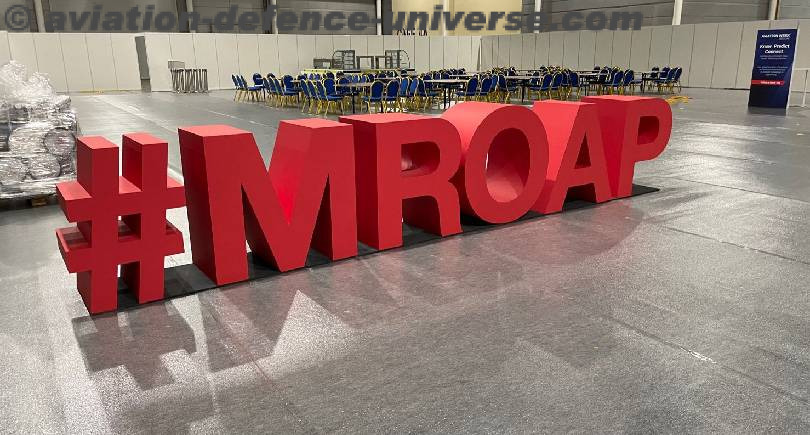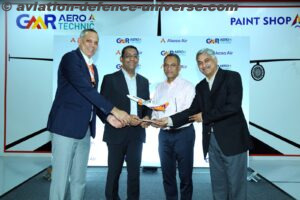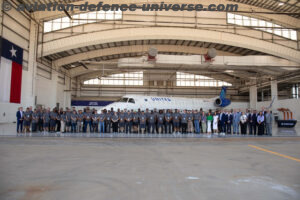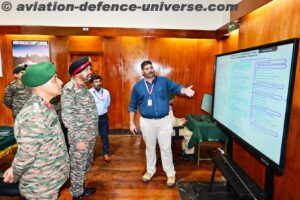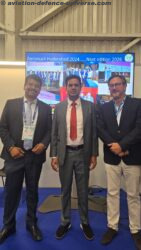- Singapore’s Reign as MRO Hub: Lessons for India’s Aviation Ambitions
- Can India Compete with Singapore’s Aviation Stronghold?
By Sangeeta Saxena
New Delhi. 24 September 2024. Impossible is a word in the dictionary of fools said Napoleon Bonaparte and no other quote could answer the above question better. As the sun is set to rise across the Singapore Strait in a few hours from now and countdown to the MRO Asia-Pacific is also coming to an end, one thought which can never surprise nor seem alien is the fact that Singapore has long established itself as one of the premier aviation maintenance, repair, and overhaul (MRO) hubs in the world, playing a critical role in the Asia-Pacific region’s aviation industry.
Leveraging its strategic geographical location, world-class infrastructure, and pro-business environment, Singapore has consistently been a leader in the global MRO sector. The country’s position as an MRO hub is complemented by the annual MRO Asia-Pacific Conference, which has become an essential platform for stakeholders to discuss industry trends, technological innovations, and future growth strategies.
 Located at the crossroads of major international flight routes, Singapore serves as a convenient stopover for aircraft traveling between Europe, Asia, and the Pacific. This strategic positioning allows airlines to easily access Singapore’s MRO services without significant detours, reducing downtime and operational costs. It’s aviation infrastructure is highly developed, with Changi Airport consistently ranked among the world’s best. This infrastructure includes a network of advanced MRO facilities, such as those operated by industry giants like Singapore Airlines Engineering Company (SIAEC), ST Engineering Aerospace, and various joint ventures with leading global OEMs (Original Equipment Manufacturers) such as Rolls-Royce and Pratt & Whitney. These facilities provide comprehensive MRO services ranging from engine overhauls to airframe maintenance, avionics, and component repair.
Located at the crossroads of major international flight routes, Singapore serves as a convenient stopover for aircraft traveling between Europe, Asia, and the Pacific. This strategic positioning allows airlines to easily access Singapore’s MRO services without significant detours, reducing downtime and operational costs. It’s aviation infrastructure is highly developed, with Changi Airport consistently ranked among the world’s best. This infrastructure includes a network of advanced MRO facilities, such as those operated by industry giants like Singapore Airlines Engineering Company (SIAEC), ST Engineering Aerospace, and various joint ventures with leading global OEMs (Original Equipment Manufacturers) such as Rolls-Royce and Pratt & Whitney. These facilities provide comprehensive MRO services ranging from engine overhauls to airframe maintenance, avionics, and component repair.
Singapore’s success as an MRO hub can be attributed to its highly skilled workforce, supported by government initiatives to invest in technical education and training programs. Institutions like the Air Transport Training College (ATTC) and collaborations with local universities ensure a steady pipeline of trained aviation professionals. Moreover, Singapore has focused on fostering expertise in next-generation technologies, such as robotics, AI-based predictive maintenance, and digital twins, further bolstering its competitiveness.
 Singapore’s pro-business environment, characterized by transparent regulations, favourable tax policies, and strong intellectual property protection, has made it an attractive destination for MRO companies. The government actively supports the MRO sector through agencies like the Economic Development Board (EDB) and initiatives like the Aerospace Industry Transformation Map (ITM), which focuses on enhancing digitalization and sustainability in aviation maintenance. This backing provides a conducive environment for global MRO firms to set up or expand their operations in the city-state. Singapore has cultivated strong partnerships with leading aerospace companies and international airlines, fostering a collaborative ecosystem. The country’s MRO sector works closely with aircraft manufacturers, engine makers, and airlines to ensure that its services remain cutting-edge and aligned with the evolving needs of the global aviation industry.
Singapore’s pro-business environment, characterized by transparent regulations, favourable tax policies, and strong intellectual property protection, has made it an attractive destination for MRO companies. The government actively supports the MRO sector through agencies like the Economic Development Board (EDB) and initiatives like the Aerospace Industry Transformation Map (ITM), which focuses on enhancing digitalization and sustainability in aviation maintenance. This backing provides a conducive environment for global MRO firms to set up or expand their operations in the city-state. Singapore has cultivated strong partnerships with leading aerospace companies and international airlines, fostering a collaborative ecosystem. The country’s MRO sector works closely with aircraft manufacturers, engine makers, and airlines to ensure that its services remain cutting-edge and aligned with the evolving needs of the global aviation industry.
The MRO Asia-Pacific Conference, held annually in Singapore, is one of the most significant events for the region’s aviation industry. The conference brings together key stakeholders from across the aviation value chain, including airlines, OEMs, MRO service providers, and regulators. The importance of this conference lies in its role as a platform for discussing current challenges, future trends, and innovative solutions that can shape the future of the MRO industry.
The MRO Asia-Pacific Conference provides an unparalleled networking platform for industry professionals. Decision-makers from airlines, OEMs, and MRO providers have the opportunity to collaborate on emerging technologies and share best practices. These interactions often result in strategic partnerships, joint ventures, and business deals that drive the growth of the MRO industry across the region. The aviation industry is increasingly reliant on cutting-edge technologies to improve operational efficiency, reduce costs, and enhance safety. The MRO Asia-Pacific Conference serves as a showcase for the latest innovations, such as predictive maintenance powered by big data, digital twin technology for real-time monitoring, and AI-driven automation in maintenance procedures. For Singapore’s MRO industry, the conference is an opportunity to demonstrate its leadership in adopting and integrating these technologies into its services.
 With aviation under pressure to reduce its environmental impact, the MRO Asia-Pacific Conference highlights the importance of sustainability in maintenance operations. Participants discuss strategies for reducing carbon emissions, minimizing waste, and improving fuel efficiency through better maintenance practices. Singapore, as a global MRO hub, is at the forefront of these discussions, positioning itself as a leader in sustainable aviation maintenance solutions. Post the COVID-19 pandemic, the aviation industry has been grappling with unprecedented challenges, including a sharp decline in passenger demand and a subsequent drop in MRO activity. The MRO Asia-Pacific Conference has played a crucial role in discussing strategies for industry recovery, focusing on how MRO providers can adapt to the new landscape, strengthen their resilience, and leverage digital transformation to rebuild operational capacity. Singapore’s ability to bounce back post-pandemic has been a focal point, with the conference highlighting its role in leading the region’s recovery.
With aviation under pressure to reduce its environmental impact, the MRO Asia-Pacific Conference highlights the importance of sustainability in maintenance operations. Participants discuss strategies for reducing carbon emissions, minimizing waste, and improving fuel efficiency through better maintenance practices. Singapore, as a global MRO hub, is at the forefront of these discussions, positioning itself as a leader in sustainable aviation maintenance solutions. Post the COVID-19 pandemic, the aviation industry has been grappling with unprecedented challenges, including a sharp decline in passenger demand and a subsequent drop in MRO activity. The MRO Asia-Pacific Conference has played a crucial role in discussing strategies for industry recovery, focusing on how MRO providers can adapt to the new landscape, strengthen their resilience, and leverage digital transformation to rebuild operational capacity. Singapore’s ability to bounce back post-pandemic has been a focal point, with the conference highlighting its role in leading the region’s recovery.
The Asia-Pacific region is one of the fastest-growing aviation markets in the world, with rapid fleet expansion and increasing passenger traffic forecasted in the coming years. The MRO Asia-Pacific Conference allows stakeholders to plan for the rising demand for MRO services by analyzing market trends, discussing capacity building, and exploring the potential for regional hubs to support this growth. Singapore, being a central player in the region, uses the conference to cement its role as the leading MRO hub for Asia-Pacific aviation.
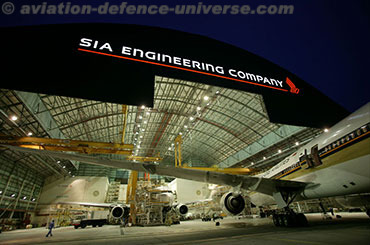 Looking ahead, Singapore’s MRO sector is expected to continue its growth trajectory, driven by rising demand for aviation services in the Asia-Pacific region and the ongoing digital transformation of the industry. With advancements in aircraft technologies, including electric and hybrid aircraft, the MRO sector will have to evolve to cater to these new platforms. Singapore’s emphasis on innovation, talent development, and sustainability places it in an advantageous position to capitalize on these trends.
Looking ahead, Singapore’s MRO sector is expected to continue its growth trajectory, driven by rising demand for aviation services in the Asia-Pacific region and the ongoing digital transformation of the industry. With advancements in aircraft technologies, including electric and hybrid aircraft, the MRO sector will have to evolve to cater to these new platforms. Singapore’s emphasis on innovation, talent development, and sustainability places it in an advantageous position to capitalize on these trends.
In conclusion, Singapore’s strategic location, world-class infrastructure, skilled workforce, and government support have cemented its position as a global leader in the MRO sector. The MRO Asia-Pacific Conference serves as a critical annual event that fosters collaboration, drives innovation, and addresses key challenges in the aviation maintenance industry. As the aviation sector continues to evolve, Singapore remains at the forefront, shaping the future of MRO services in the Asia-Pacific region and beyond.
 The MRO Association of India is a vital force in India’s country’s aviation sector, dedicated to advancing the Maintenance, Repair, and Overhaul (MRO) industry and is represented by Bharat Malkani CMD Max Aerospace at the event. Since its inception, the association has been instrumental in advocating for policy reforms, fostering industry innovation, and positioning India as a global hub for aviation maintenance services. On the occasion of MRO Asia-Pacific , Bharat Malkani, President of the MRO Association of India, reflected on the sector’s journey from a neglected industry to a thriving powerhouse, driven by technological advancements, skilled manpower, and strategic policy changes. He noted with pride that a good number of MRO companies were participating in the event at Singapore, showcasing their technical expertise and professional excellence matching global standards. “Our sector has become a crucial enabler of operational readiness for both civilian and defence aviation, contributing to the safety and efficiency of air operations across the region,” he said.
The MRO Association of India is a vital force in India’s country’s aviation sector, dedicated to advancing the Maintenance, Repair, and Overhaul (MRO) industry and is represented by Bharat Malkani CMD Max Aerospace at the event. Since its inception, the association has been instrumental in advocating for policy reforms, fostering industry innovation, and positioning India as a global hub for aviation maintenance services. On the occasion of MRO Asia-Pacific , Bharat Malkani, President of the MRO Association of India, reflected on the sector’s journey from a neglected industry to a thriving powerhouse, driven by technological advancements, skilled manpower, and strategic policy changes. He noted with pride that a good number of MRO companies were participating in the event at Singapore, showcasing their technical expertise and professional excellence matching global standards. “Our sector has become a crucial enabler of operational readiness for both civilian and defence aviation, contributing to the safety and efficiency of air operations across the region,” he said.
While both Singapore and India are key players in the global aviation industry, Singapore has established itself as a more prominent MRO hub for several reasons. However, India has immense potential to develop into a significant MRO destination as well. Strategic location and Aviation connectivity make both the countries potential players in MRO arena. Singapore’s geographical location at the crossroads of major air routes between Europe, Asia, and the Pacific has allowed it to become a convenient stopover for airlines. This makes it an ideal location for MRO services as airlines can integrate maintenance into their existing flight schedules with minimal disruption. Singapore’s Changi Airport is a major global aviation hub, with over 100 airlines connecting to more than 400 cities, making it highly accessible for both international and regional operators. India also enjoys a strategic location between Europe and Southeast Asia, making it geographically advantageous for the MRO sector. However, its potential remains underutilized.
 India has a large and growing aviation market, with high demand for domestic and international air travel. Yet, airlines often prefer to send their aircraft abroad for MRO services due to the challenges in infrastructure, regulatory complexities, and tax structures. Infrastructure and facilities is another parameter which hangs in favour of Singapore which has heavily invested in its world-class aviation infrastructure, which includes cutting-edge MRO facilities operated by major players like SIA Engineering Company, ST Engineering Aerospace, and various joint ventures with leading global Original Equipment Manufacturers (OEMs). Its facilities cover the entire spectrum of MRO services, including airframe, engine, and component maintenance, and are equipped with state-of-the-art technologies such as digital twins, predictive maintenance, and robotics.
India has a large and growing aviation market, with high demand for domestic and international air travel. Yet, airlines often prefer to send their aircraft abroad for MRO services due to the challenges in infrastructure, regulatory complexities, and tax structures. Infrastructure and facilities is another parameter which hangs in favour of Singapore which has heavily invested in its world-class aviation infrastructure, which includes cutting-edge MRO facilities operated by major players like SIA Engineering Company, ST Engineering Aerospace, and various joint ventures with leading global Original Equipment Manufacturers (OEMs). Its facilities cover the entire spectrum of MRO services, including airframe, engine, and component maintenance, and are equipped with state-of-the-art technologies such as digital twins, predictive maintenance, and robotics.
India’s MRO infrastructure is still in development, and while there are some high-quality facilities, they are fewer in number compared to Singapore. Major Indian MRO companies are growing but need substantial investment in technology and capacity to compete on the global stage. Furthermore, airport congestion in key cities like Delhi and Mumbai makes it challenging to integrate large-scale MRO operations seamlessly into daily air traffic.
Singapore offers a pro-business environment with transparent, efficient regulations and attractive tax policies, making it easier for global companies to operate MRO facilities. Zero GST on aircraft maintenance services and minimal import duties on aircraft parts provide additional financial incentives for airlines to base their MRO operations in Singapore.
India has historically faced challenges with its complex regulatory and tax framework, including high Goods and Services Tax (GST) rates on MRO services and customs duties on spare parts. This made it financially unviable for many airlines to conduct MRO work domestically, prompting them to look for options abroad. Recent reforms, such as reducing GST from 18% to 5% on MRO services and removing customs duties on spare parts, have aimed to make India more competitive. However, the changes are relatively new, and more comprehensive reforms are needed to create a smoother regulatory environment.
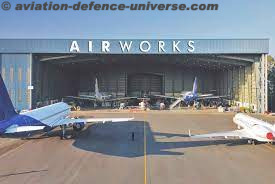 Despite being a developed country with higher labour costs, Singapore’s MRO sector is highly cost-efficient due to its advanced technology, economies of scale, and superior turnaround times. The country’s investment in digitalization and automation also helps reduce labour dependency, thus minimizing costs. India offers lower labour costs, making it an attractive option for cost-conscious airlines. However, these cost savings are often offset by inefficiencies, longer turnaround times, and higher indirect costs related to logistics and regulatory procedures. To leverage its cost advantage, India needs to improve operational efficiency and make the MRO process more seamless.
Despite being a developed country with higher labour costs, Singapore’s MRO sector is highly cost-efficient due to its advanced technology, economies of scale, and superior turnaround times. The country’s investment in digitalization and automation also helps reduce labour dependency, thus minimizing costs. India offers lower labour costs, making it an attractive option for cost-conscious airlines. However, these cost savings are often offset by inefficiencies, longer turnaround times, and higher indirect costs related to logistics and regulatory procedures. To leverage its cost advantage, India needs to improve operational efficiency and make the MRO process more seamless.
Singapore has a well-established ecosystem of highly skilled aviation professionals, supported by a robust education and training system, with institutions like the Air Transport Training College (ATTC). The government also actively promotes talent development through specialized courses and collaboration with the industry. The country emphasizes continuous upskilling, which ensures its workforce remains adept with the latest technologies in aviation. India has a large pool of talented engineers and technicians, but skilled manpower in the aviation sector still requires further development. The country’s MRO workforce often faces gaps in technical expertise and training, especially when it comes to working with modern, next-generation aircraft systems. Indian institutions are focusing on building capacity through aviation training programs, but a more coordinated and industry-aligned approach is needed to scale the required talent.
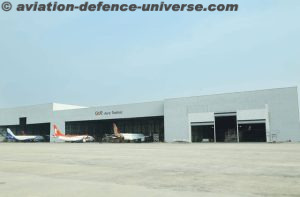 Singapore is home to numerous OEM partnerships and joint ventures with leading global aerospace companies such as Rolls-Royce, Pratt & Whitney, and Airbus, giving it an edge in MRO capabilities. These partnerships allow Singapore’s MRO industry to stay at the forefront of technological developments and provide comprehensive, certified services for multiple aircraft types. India has a growing presence of global OEMs and the concept of OEM-authorized MRO centres is just beginning to take shape which means many Indian airlines prefer sending their aircraft overseas for more specialized maintenance tasks. Developing stronger partnerships with global OEMs is all set greatly boost India’s MRO sector. But what needs to be harnessed strongly is the burgeoning private indigenous MRO industry, which has all the requisites but has always been left wanting. Their expertise and capabilities need to be recognised by the airlines and OEMs for getting them seamlessly into their folds for MRO requirements. It is just a plain and simple equation of demand and supply. The day the growth demand becomes steady, the private sector MRO industry will automatically create facilities to fulfil this commitment to do world class maintenance, repair and overhaul with ease.
Singapore is home to numerous OEM partnerships and joint ventures with leading global aerospace companies such as Rolls-Royce, Pratt & Whitney, and Airbus, giving it an edge in MRO capabilities. These partnerships allow Singapore’s MRO industry to stay at the forefront of technological developments and provide comprehensive, certified services for multiple aircraft types. India has a growing presence of global OEMs and the concept of OEM-authorized MRO centres is just beginning to take shape which means many Indian airlines prefer sending their aircraft overseas for more specialized maintenance tasks. Developing stronger partnerships with global OEMs is all set greatly boost India’s MRO sector. But what needs to be harnessed strongly is the burgeoning private indigenous MRO industry, which has all the requisites but has always been left wanting. Their expertise and capabilities need to be recognised by the airlines and OEMs for getting them seamlessly into their folds for MRO requirements. It is just a plain and simple equation of demand and supply. The day the growth demand becomes steady, the private sector MRO industry will automatically create facilities to fulfil this commitment to do world class maintenance, repair and overhaul with ease.
While Singapore’s domestic aviation market is relatively small, it capitalizes on its regional and international appeal. The country primarily serves as a regional MRO hub for airlines across Asia-Pacific and the Middle East, allowing it to command a global market despite its size. India’s aviation market is one of the fastest-growing in the world, with increasing air traffic and fleet expansions. India’s potential to become an MRO hub lies in its domestic demand for MRO services, as Indian airlines are rapidly adding new aircraft to their fleets. However, if India can better align its infrastructure and regulatory framework, it could reduce its reliance on foreign MRO facilities and build a robust internal market.
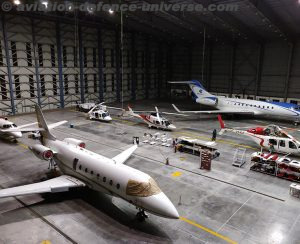 The Path forward for India as a MRO Hub is neither impossible to walk on nor as bumpy as it may seem. India has vast potential to become a major player in the MRO industry, given its growing aviation market, cost advantages, and emerging infrastructure. However, there are several steps India must take to catch up with Singapore and other global MRO hubs: India needs to expand and modernize its MRO facilities and airports to support larger volumes of maintenance work. Investment in technology and automation will be key to improving operational efficiency. India must continue to streamline its tax and regulatory framework to encourage domestic airlines and global MRO providers to conduct maintenance within the country. Building stronger partnerships with global OEMs will allow India to provide comprehensive, certified MRO services, reducing the need for airlines to seek maintenance abroad. A more coordinated approach to training and upskilling the MRO workforce is needed, focusing on both traditional aviation engineering and next-generation technologies.
The Path forward for India as a MRO Hub is neither impossible to walk on nor as bumpy as it may seem. India has vast potential to become a major player in the MRO industry, given its growing aviation market, cost advantages, and emerging infrastructure. However, there are several steps India must take to catch up with Singapore and other global MRO hubs: India needs to expand and modernize its MRO facilities and airports to support larger volumes of maintenance work. Investment in technology and automation will be key to improving operational efficiency. India must continue to streamline its tax and regulatory framework to encourage domestic airlines and global MRO providers to conduct maintenance within the country. Building stronger partnerships with global OEMs will allow India to provide comprehensive, certified MRO services, reducing the need for airlines to seek maintenance abroad. A more coordinated approach to training and upskilling the MRO workforce is needed, focusing on both traditional aviation engineering and next-generation technologies.
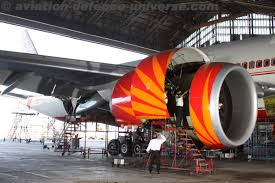 India should work to better promote its MRO capabilities to both domestic and international airlines by showcasing the advantages of conducting maintenance work within the country. In conclusion, while Singapore has established itself as a leading MRO hub due to its infrastructure, regulatory environment, and strategic partnerships, India has the potential to emerge as a strong contender. By addressing the challenges in infrastructure, regulation, and skill development, India can carve out a significant share of the global MRO market.
India should work to better promote its MRO capabilities to both domestic and international airlines by showcasing the advantages of conducting maintenance work within the country. In conclusion, while Singapore has established itself as a leading MRO hub due to its infrastructure, regulatory environment, and strategic partnerships, India has the potential to emerge as a strong contender. By addressing the challenges in infrastructure, regulation, and skill development, India can carve out a significant share of the global MRO market.
Post Script : As a keen follower of the MRO industry in India, positivity needs to be kept intact but at times reality dawns , which really hits hard. Many of the latest MRO reports highlight a glaring omission-India’s MRO industry-which remains too insignificant to be considered a serious player on the global stage. Combined all Indian MRO companies contribute less than 0.5% to the global MRO market, a statistic that reflects the country’s peripheral role in this booming sector. It is no surprise that the reports do not account for India’s MRO scenario—it simply doesn’t matter when viewed from a global perspective. While the rest of the world capitalizes on this growing industry, Indian MRO remains stuck in bureaucratic debates and industry inputs which seem to go nowhere. Despite having a burgeoning aviation market, India continues to outsource its MRO needs to countries like Singapore, Turkey, the Netherlands, France, and Germany. Over 200,000 direct labor jobs, by one estimate, have been created in these countries solely to handle MRO work for Indian aviation. This raises a critical questions – Is India too wealthy to develop its own MRO sector, or are there deeper inefficiencies at play? Perhaps, as some suggest, the country is content to have foreign nations benefit from its aviation maintenance needs, either out of favor or sheer inertia. The scales, without a doubt, are tipped in favour of foreign MRO hubs, while Indian stakeholders continue to deliberate on trivial matters. There is a pervasive sense that by finally addressing the MRO sector’s issues and listening to industry input, the government risks “giving away the family jewels.” But the reality is far bleaker—those jewels are already firmly in the custody of foreign nations, with India left to collect the crumbs, all while believing it is making progress. Today, Indian MRO work represents less than 10% of the domestic market and a minuscule 0.5% of the global market. These numbers are a wake-up call to anyone paying attention, but it seems few are. India’s governance, it appears, is more interested in holding meetings, taking notes, and disregarding logic, all while self-congratulating and perpetuating the status quo. The question remains: is anyone in power truly listening, or is the MRO sector destined to remain an afterthought in India’s aviation ambitions?



































